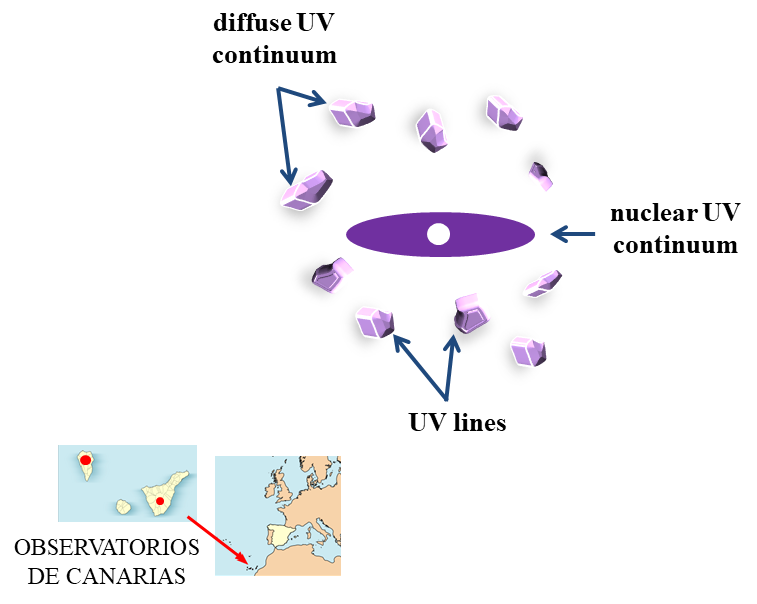It is thought that the UV emission of a quasar is mainly generated in an accretion disc around a central supermassive black hole and gas clouds surrounding the accretion disc. This accretion disc produces the nuclear continuum, while the diffuse continuum and broad emission lines are generated in the clouds around the central engine (see Fig. 1).

The first lensed quasar (Q0957+561) has two optically bright and widely separated images whose brightness has been accurately monitored during the last 25 years from frames taken at Teide and Roque de los Muchachos Observatories (Observatorios de Canarias; see map on the bottom left corner of Fig. 1). As optical passband fluxes of this quasar are related to UV sources, the optical light curves of Q0957+561 revealed the origin of its UV emission. Using the light curves in the g and r bands, we found that about 20% of the UV emission corresponding to these passbands is generated within the gas clouds in the circumnuclear region (see this paper). It is also important to emphasize that the tension between the accretion disc size from microlensing and its reverberation-based value may be due to an overestimation from microlensing studies, which usually neglect the contribution of the circumnuclear emission and derive effective sizes (accretion disc + circumnuclear region).